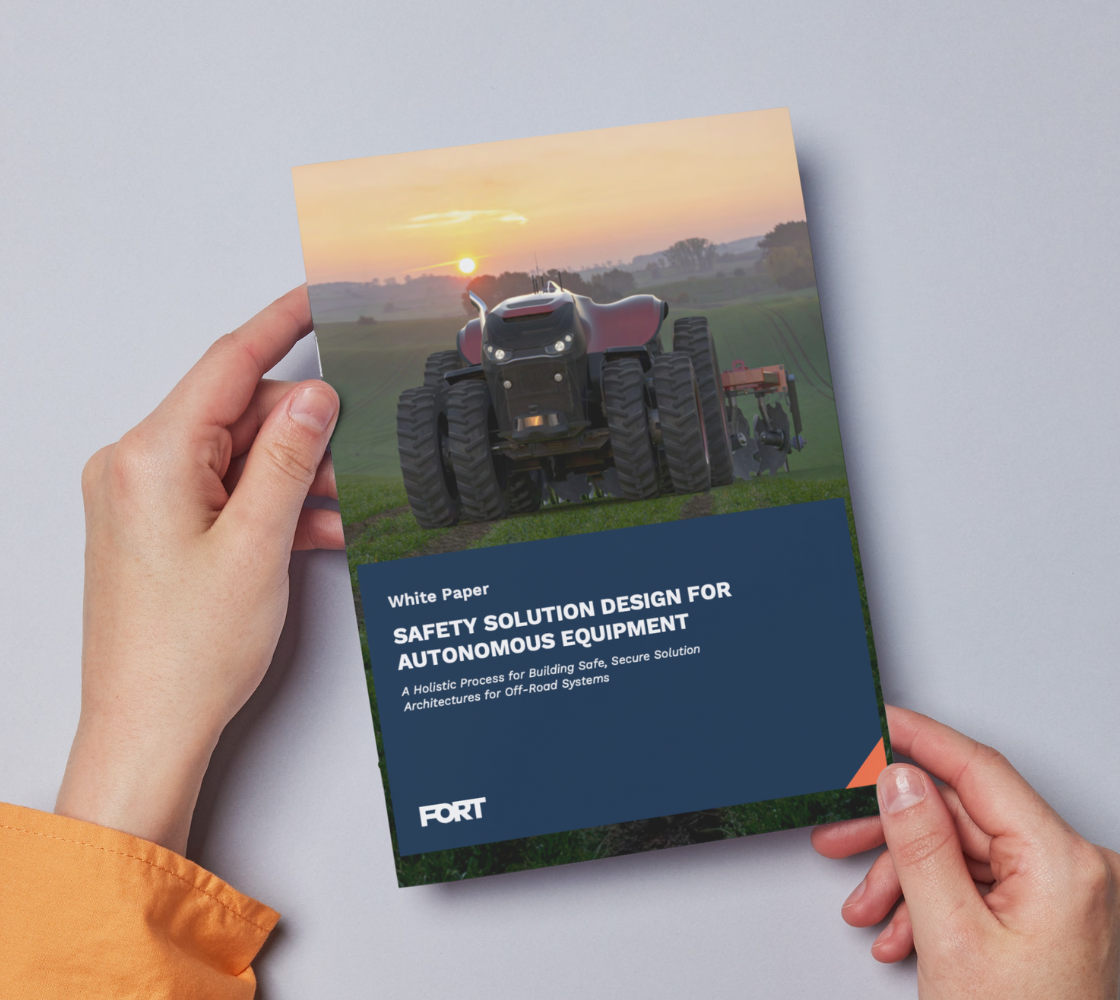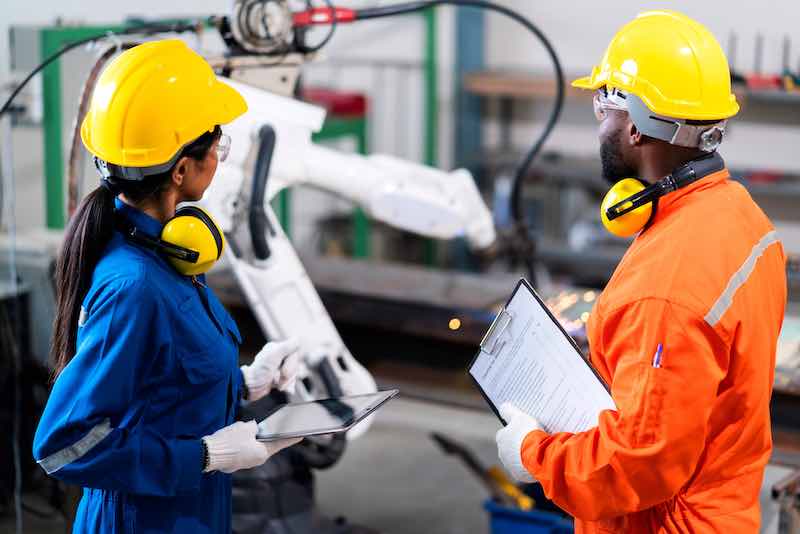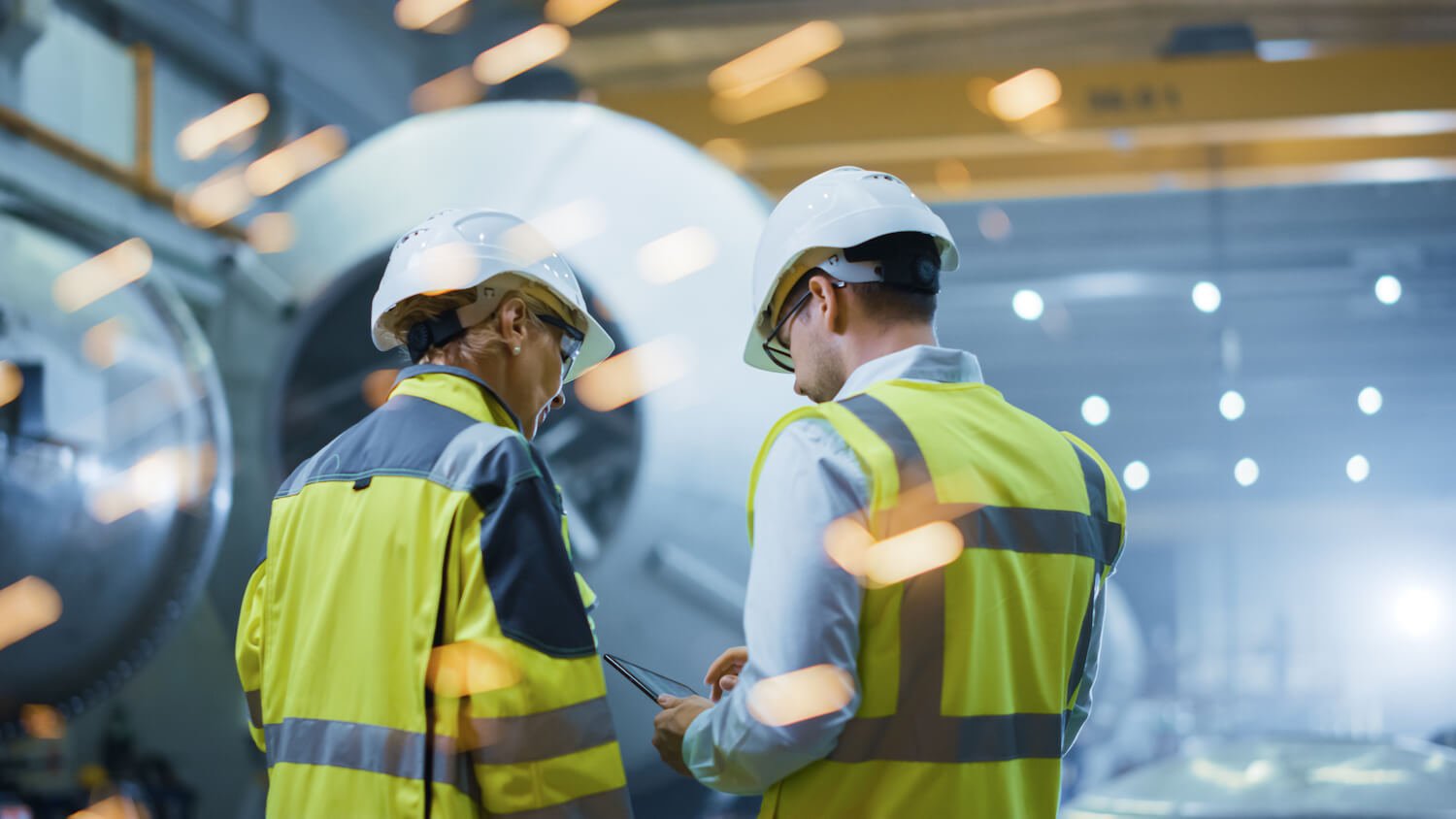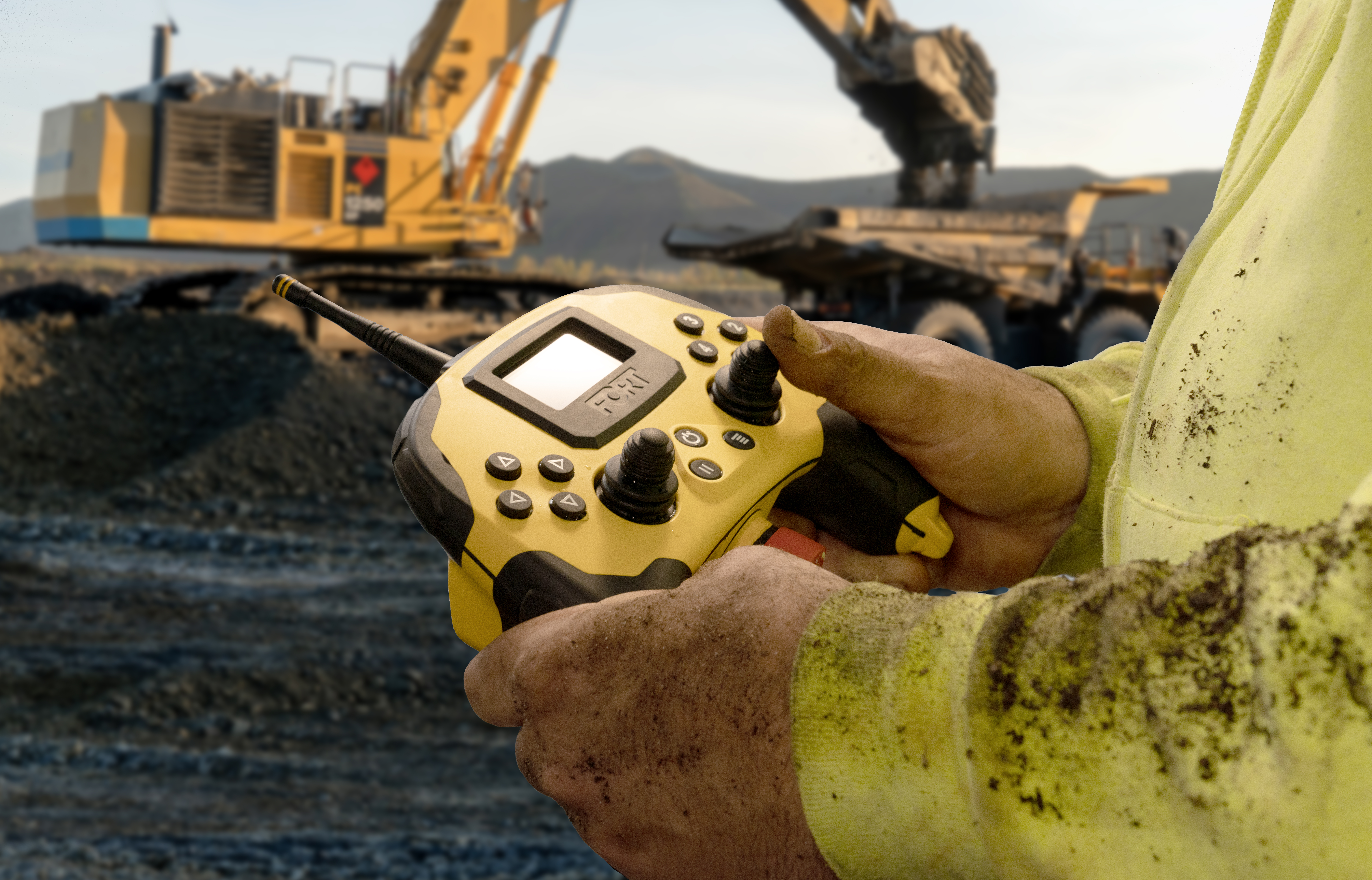Maximizing Productivity in Agriculture with Safe and Secure Machines
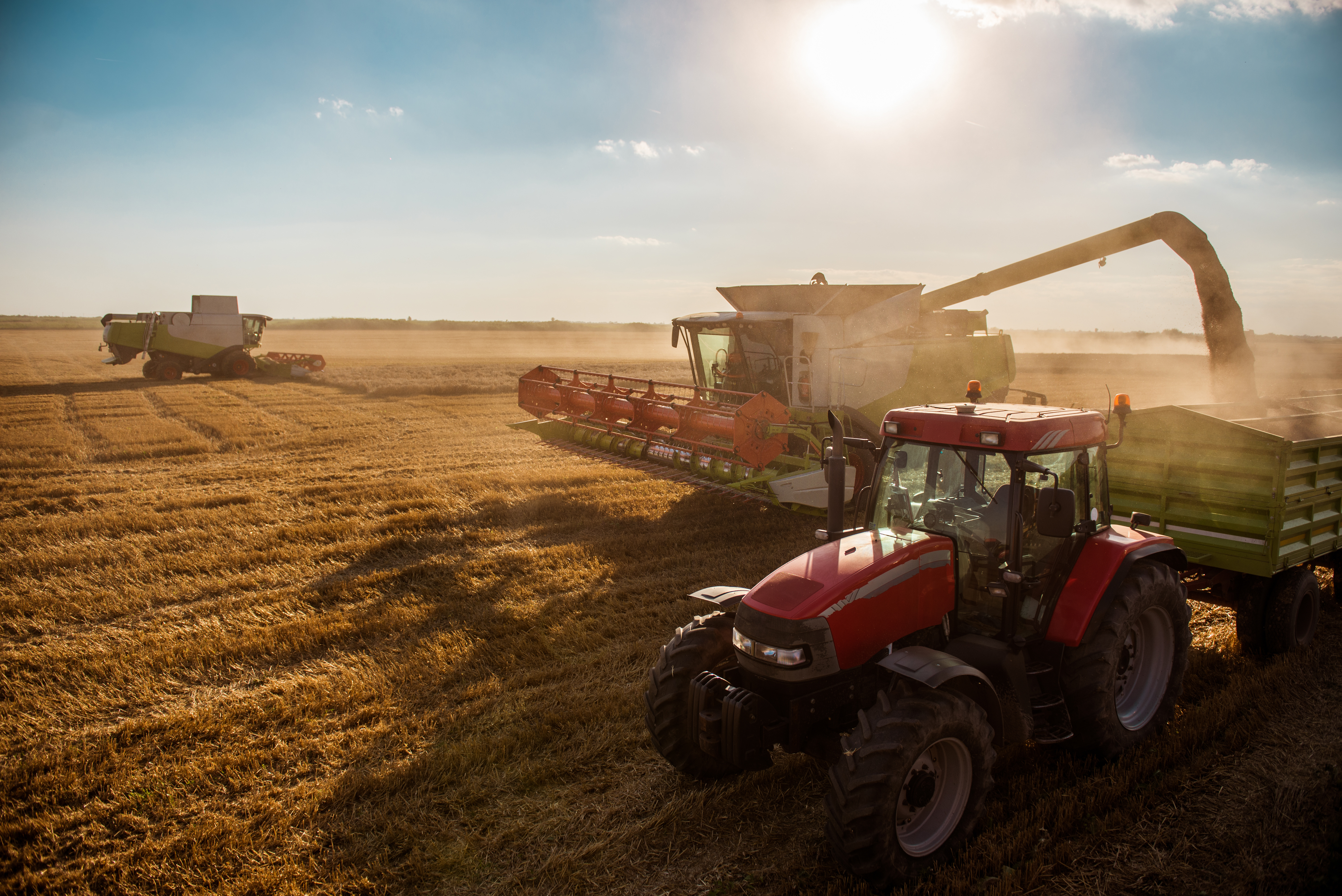
The Agriculture industry has been facing mounting pressures over the past few decades. Operational costs continue to grow, the labor pool continues to shrink, and environmental changes make maximizing crop yield a constant struggle.
In addition, agriculture also has to adapt to evolving regulations and shifts in demand. These problems make prioritization a necessity. How do farmers address their labor challenges or evolving regulations? By shifting to autonomous machinery that has significant upfront costs, or by finding less skilled workers willing to endure the long, nighttime or early morning shifts? How do agricultural producers handle shifting trends like the reduction in the use of herbicides?
New Trends in Agricultural Technology
Farmers have to determine what technology they can use to enable them to make better and faster decisions so they can maximize profits and minimize waste. Many are switching to connected, semi-autonomous and autonomous machines, but this transition can also introduce new challenges. These challenges include significant upfront equipment costs, trust that the equipment won’t damage their crops, fear that machines can injure humans, and connectivity for machines in areas where there is no internet.
Adopting autonomous machinery can enable farmers to improve crop yields and quality, reduce labor and fuel costs, and minimize risk. To fully realize these benefits, autonomous machines need to require minimal startup time and effort. In addition, they need to provide a high level of control to maximize precision, run time, and crop yield. These machines can reduce inputs by up to 80% in some cases.
Key factors for farmers when considering a transition to autonomous machines include:
- Trust in the equipment: to ensure crops won’t be damaged (e.g. real-time video and management systems to monitor, adjust, and stop the machine)
- Connectivity: to compensate for incomplete or intermittent coverage (e.g. private radio)
- Familiarity with equipment: so transitioning to electric or autonomous machines has low barriers to entry, minimizes risk, and saves on labor and diesel costs
- Safety features: to ensure people and assets around machines are safe
Benefits of Agricultural Automation
The agriculture industry is facing numerous challenges. Specialty crops are continuously faced with labor scarcity, while row crops have to manage space limitations and maximize crop yield. All of agriculture is faced with razor-thin margins as costs continue to increase.
Automation helps with all of these issues and more. Transitioning to semi-autonomous and autonomous machines reduces labor demand, increases production, improves crop yield, reduces water usage, and enhances overall operational efficiency.
Labor shortage is a growing problem. Automation can help reduce the dependency on manual labor by transitioning highly repetitive and dangerous jobs to autonomous machines. These machines can also help absorb the challenges of seasonal labor demands.
As the world population continues to grow, agriculture is struggling to meet increasing production demands. Automated machines can help increase food production rates and can optimize processes to maximize crop yields.
The growth in population and decrease in available land is also putting significant pressure on water resources. The availability and cost of water can be detrimental to farming. Smart farming can reduce water consumption and irrigation costs.
Overall operational costs for farms continue to grow. Autonomous machines help save time, energy, and resources by enabling farmers to complete tasks more efficiently, with a higher crop yield, and with less variable costs. By adopting technology and automation, farmers can overcome many of the challenges they face today and transition to more sustainable and efficient farming practices.
Building Safe Autonomous Farming Equipment
A common misconception is that autonomous machines have to be “fully-baked” to commercialize. Because functional safety and autonomy are forever evolving no machine will ever be fully-baked. There are alternative ways to mitigate risks with early low volume fleets. Technology evolves as it is deployed in the hands of customers, including the increase of safety (e.g. better training of neural networks over time).
Functional Safety Development
Some worry that a focus on product safety, specifically functional safety, will slow down commercialization of technology. While it may initially seem so, functional safety (which is focused on electronic and SW controls), is essentially good systems engineering. Therefore, a focus on functional safety will eventually lead to more sustainable product performance and better business results.
A balanced approach prioritizes activities and requirements which drive the architectural definition. This approach increases the chances that the end design will incur only incremental cost to meet industry standards, and therefore be suitable for commercialization. Focusing on functional safety does not necessarily slow development. For example, using certified components leads to faster integration of those components into a system due to their well-documented interfaces.
The ROI of Machine Safety
With the current economic environment, many small and medium sized companies are worried they cannot afford to implement functional safety because it is too expensive. Plus, their investors are focused only on customer value and functionality. Companies that do not pay attention to functional safety, early on, commonly face obstacles to commercialization of their products. This lack of attention results in delays to earning revenue, customer frustration, and potential loss of enthusiasm by investors.
Small companies can start applying the principles of product safety, and more specifically functional safety, by choosing a subset of the requirements written in the relevant safety standard. For example, even if the architecture is not stable and the engineering team is still focused on delivering basic functionality, it still makes sense to execute a preliminary hazard analysis and risk assessment. This activity can uncover key hazards that will drive architectural requirements. Finding these requirements after the architecture has been implemented, can result in frustration, delays, and costly rework.
Early investors may appear to be fully focused on functionality and customer value. However, seasoned venture capital investors realize that the sustainability of the business hinges on meeting key expectations in the market. One of those expectations is safety. Accidents can result in costly lawsuits and, if the company has not been diligent in executing efforts from a defensible position, all of the investment may be lost in court.
Connectivity for Autonomous Equipment
Only half of all farms have any form of connectivity, and without connectivity, autonomous machines will not work. Connectivity is important for operational support, data collection and machine control. Fortunately, there is a great deal of flexibility available in this space. With the introduction of Low Earth Orbit Satellites, private cellular networks, ISM radio, Wi-Fi, and Bluetooth, people have more options than ever before. Furthermore, connectivity does not need to be constant. Machines can connect when at a hub location to receive route information and exchange other machine information. This flexibility in wireless communication reduces the limitations that many agriculture sites face.
Functional Safety Standards and Cybersecurity Standards
Functional safety standards and cybersecurity standards exist in many industries, including agriculture. These standards are used to define and often prescribe requirements for safe equipment design — from components to complex systems — and cover a large variety of equipment types used worldwide. Safety standards are important for all stakeholders, from the Original Equipment Manufacturers (OEMs) down to the end customers, because they quantify the safety integrity of the system and ensure there is minimal risk in operating the machine. Standards exist to drive commonality, keep people safe, and enable commerce.
Standards tend to be more prescriptive as they get more granular and closer to a specific machine, application, or region. Machine-specific or region-specific standards often remove ambiguity by defining details of safety needs for a particular use case or regional regulatory regime. For example, the autonomous agriculture standard ISO 18497 gives details of the modeling and testing methods that should be used to qualify a person detection sensor. This detail eliminates a significant amount of ambiguity that exists in higher level standards and reduces the system design risk by providing an industry test standard.
Functional safety and cybersecurity standards are always evolving. As the agriculture industry incorporates higher levels of automation in their machines, the standards will also progress to ensure the safety and security of these machines and of the humans and assets surrounding them.
Today, many standards exist that are either relevant for the agriculture industry or specific to it. For example, ISA/IEC 61511 provides guidelines for functional safety in the process industry which includes agriculture. Safety standards such as IEC 61508, IEC 62304, ISO 26262, IEC 60880, EN 50128/50129, and ISO 25119 ensure functional safety of electrical, electronic, and programmable electronic safety-related systems. Some examples of safety standards for agricultural and construction earth-moving machinery include:
|
ISO 18497 |
Safety of partially or fully autonomous agricultural equipment and tractors |
|
IEC 25119 |
Electrical and electronics for safety-related systems used in agriculture and forestry |
|
ISO 15817 |
Essential safety requirements for remote operator control systems used on earth-moving machinery |
|
ISO 17757 |
General safety requirements and considerations for autonomous and semi-autonomous mobile machines used in earth-moving and mining applications. |
Benefits of Safe and Secure Autonomous & Semi-Autonomous Machines for Agriculture
The shift to automation and autonomous equipment has made safety and security not only relevant, but critical. When looking at equipment design and operation, safety is always relevant. However, the increase in automation has created more safety challenges as software encodes safe operational logic, which was previously in the hands of a trained operator.
Security has become relevant when equipment is connected and mobile to avoid hacking or interception of potentially confidential data. Because electronic control systems have an important amount of software and artificial intelligence, and the code and main control parameters are transmitted over the air, the risk of hacking is significantly higher.
Even when developers create safe control code, if the code is corrupted or the configuration or calibration parameters are altered for any reason, safety is compromised. For this reason, in an age of semi-autonomous machines, security is a necessary condition of safety.
Autonomous and semi-autonomous machines offer many advantages beyond the benefits of simple automation. They help meet end customer requirements of efficiency and productivity, as well as lowering costs. However, the technology needs to prevent safety and security incidents from occurring, incidents that can negate the value generated by automation.
By adhering to safety standards, the machines reduce OSHA injury rates, minimize the risk of accidents, and maintain a positive image. Automating tasks and minimizing human involvement creates a safe working environment.
In the case of specialty crops, safe and secure autonomous and semi-autonomous machines ensure OSHA compliance and prioritize the safety of workers. For row crops, these machines help prevent accidents that can cause injury and damage. Due to their larger size, they can reduce liability and insurance costs while ensuring the safety of people, animals, and other machines.
Navigating the Commercialization of Autonomous Functionality
The commercialization of autonomous equipment has emerged as a central focus within the industrial landscape, prompting a critical question: should autonomy be integrated into existing equipment through retrofit approaches or incorporated into new products from the ground up? Each approach brings its own set of advantages and disadvantages, which industry stakeholders must carefully consider.
The integration of autonomous technology from the inception of a product offers a promising avenue for achieving optimal performance, safety, and usability. In this approach, all components are meticulously designed to meet the specific requirements of autonomous operations tailored for a particular field. This encompasses considerations such as the mechanical and hydraulic components, the necessity of a cab, rider comfort, and more. For instance, designers may question whether it is necessary to burden the product with the cost and complexity of integrating an air-conditioning solution for the cab, or in some cases, whether the cab itself is redundant. Eliminating the cab, for instance, can simplify the vehicle architecture and reduce costs. Moreover, safety features like rollover bars, crucial for human operators, may become unnecessary in an autonomous setup, where human lives are not at stake.
However, this approach comes with a significant financial commitment for customers. Procuring equipment with integrated autonomous technology means investing in both the electronic and software components required for autonomy, as well as the mechanical and hydraulic components. This upfront cost can be substantial, especially if the concept of autonomous equipment has not been fully proven in the customer's operational context. Conservative producers may hesitate to invest in expensive equipment without concrete evidence of its value in their specific conditions.
In contrast, the retrofit approach involves taking a fairly modern, existing piece of equipment and integrating an electronics package that interfaces with the vehicle's actuators (such as brakes, steering, PTO control, and hydraulics) to enable autonomous functionality. While this method may be less optimal because the original equipment was designed for human operation, it offers certain advantages. Retrofits allow technology to be added to a well-established piece of equipment with a proven track record, reducing the risk associated with unproven technology. This approach also enables producers to assess the technology's viability without the need to invest in an entirely new vehicle.
From the perspective of Original Equipment Manufacturers (OEMs), the ideal scenario is selling complete packages. This approach ensures that performance, safety, and usability are engineered optimally for autonomous operation. It also provides OEMs with control over the electronic systems of the equipment, reducing reliance on third-party solutions and allowing them to maintain their competitive edge in the market.
Limiting the integration possibilities, such as encrypting the data buses to prevent third-party signals, may lead to integrators choosing alternative equipment brands for a complete solution. For instance the efforts of companies developing retrofit kits may result in the sale of a larger fleet of autonomous vehicles because integrators may pursue the acquisition of the least expensive autonomy-ready equipment, both for margin considerations and ease of technical integration.
Failing to invest in autonomy-ready equipment risks losing sales and the associated margins that could be obtained by including equipment in a third-party solution.
Lastly, the question of product safety and corresponding liability needs to be carefully examined. Today, the allocation of liability is not clear between the producer (likely the owner of the piece of equipment), the dealer (potentially also the integrator of equipment and autonomy technology), and the OEM (supplier of the equipment, and possibly also the autonomous technology). In the case of a fully integrated autonomy functionality into a new piece of equipment, there's no question of who holds the liability, as it is an integrated solution. However, in the case of a retrofit approach, liability in the event of an accident is less clear. More work is necessary to map the contributions to risk from the perspectives of equipment failure, autonomy technology, and unforeseen applications of the technology.
The choice between integrating autonomy into new equipment or retrofitting existing machinery depends on various factors, including cost considerations, risk tolerance, and the need for proven performance. Regardless of whether an OEM chooses to build the autonomy functionality from the initial concept all the way to a new autonomous product introduction or chooses to provide “autonomy ready” equipment, there is a clear need for a safety case. The safety case will be met when using tested components in the base equipment (e.g. tractor), autonomy components (sensors, computing, communications) to execute safety critical functions such as communicating, braking, steering, etc. As the commercialization of autonomous equipment continues to evolve, industry stakeholders must carefully evaluate their strategies to make informed decisions that align with their specific objectives and priorities. For now, it seems that the safest path is to be ready for both approaches.
Benefits of Working With a Third Party for Safety Design
As machines become more complicated, connected, and collaborate more closely with people, it’s essential to prioritize safe and secure machine design and utilization. Successful autonomous machine systems should be able to interact with people, and other machines in a way that reduces risk as much as possible. Such risk reduction, typically through the adherence to best industry practices and standards, can be daunting to OEMs more accustomed to more traditional products.
Following a rigorous safety and security design process starting at the beginning of solution development can save time, money, and hassle throughout the development of a product. It can also lead to a more predictable development timeline. Identifying and addressing risks and hazards later in the product design process is generally more time-consuming and costly than at the beginning of development. There are also many choices necessary to establish a balanced approach in the product design stages, which product safety experts with experience and expertise can best navigate.
Outsourcing with the right specialist can be highly beneficial as they can help accelerate development and commercialization by removing unnecessary staffing, build time, and expenses — helping advance products from ideation to the market. Specialists assist in building safety and security in from the start, so machines are designed and developed to be functionally safe and secure. Working with a specialist also allows machines to be certifiable and field testing ready by delivering certifiable safety and security solution designs, suitable for field testing and commercialization. Utilize a tried and true team of industry experts across the off-highway machinery industries.
About FORT Robotics (FORT)
FORT’s first-of-its-kind Robotics Control Platform gives robot builders and users safe, secure, and dynamic control over their machines. With autonomous systems on the rise in every industry, FORT’s hardware and software solutions help companies meet the demand for human-machine collaboration while reducing risk, ensuring that people, assets, and data are protected and productive. Founded in 2018, FORT serves hundreds of customers including industry leaders in warehousing, agriculture, construction, mining, and many other industries.
About Balanced Engineering
Balanced Engineering is a premier consulting, strategy, and engineering services firm specializing in automation, electrification, and safety for off-road machinery, especially in agriculture and construction. We guide companies, large or small, in their progression from selling conventional products to delivering automated, electrified and interconnected solutions, ensuring top-tier safety. More information at balanced.llc.

